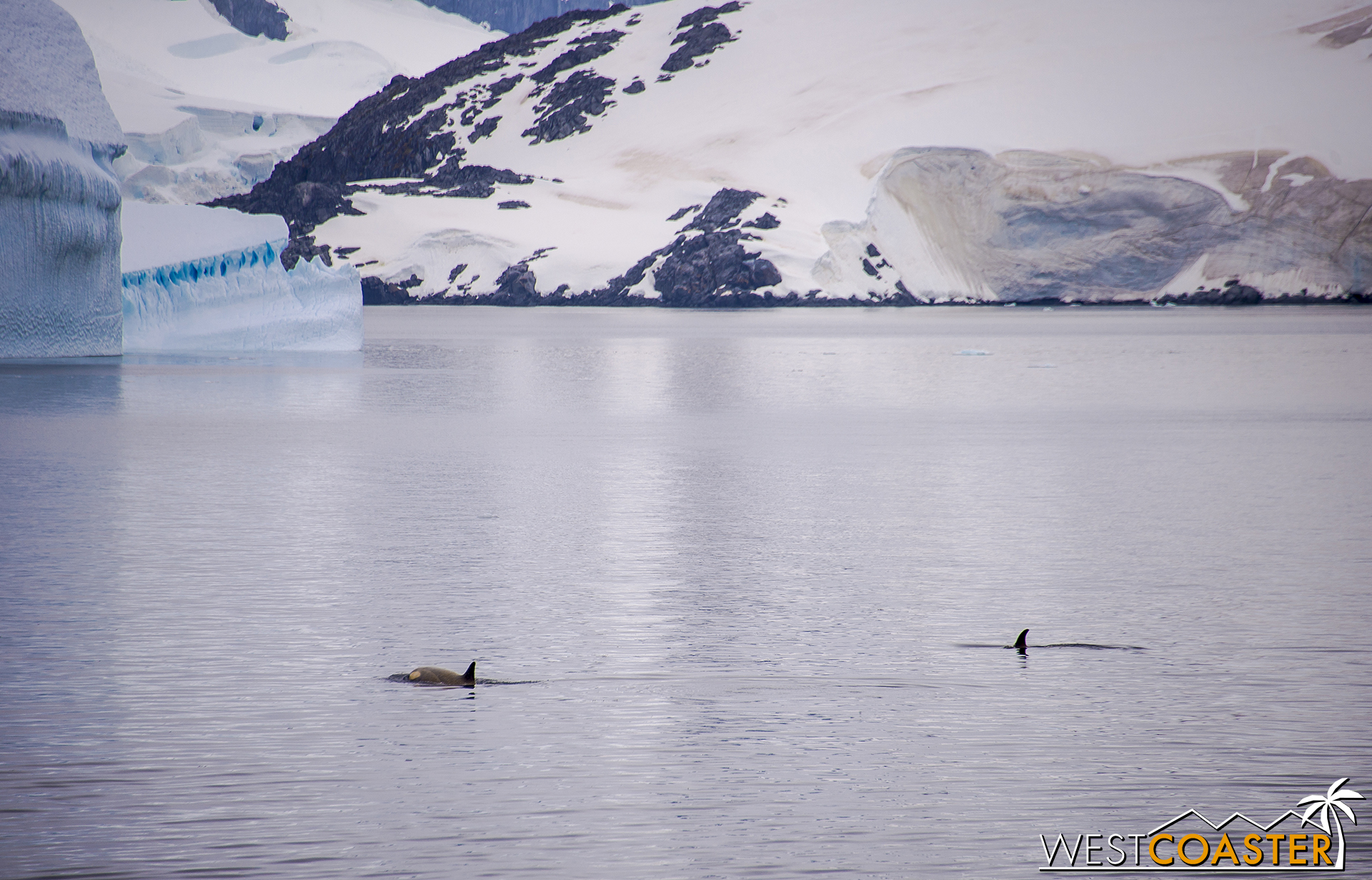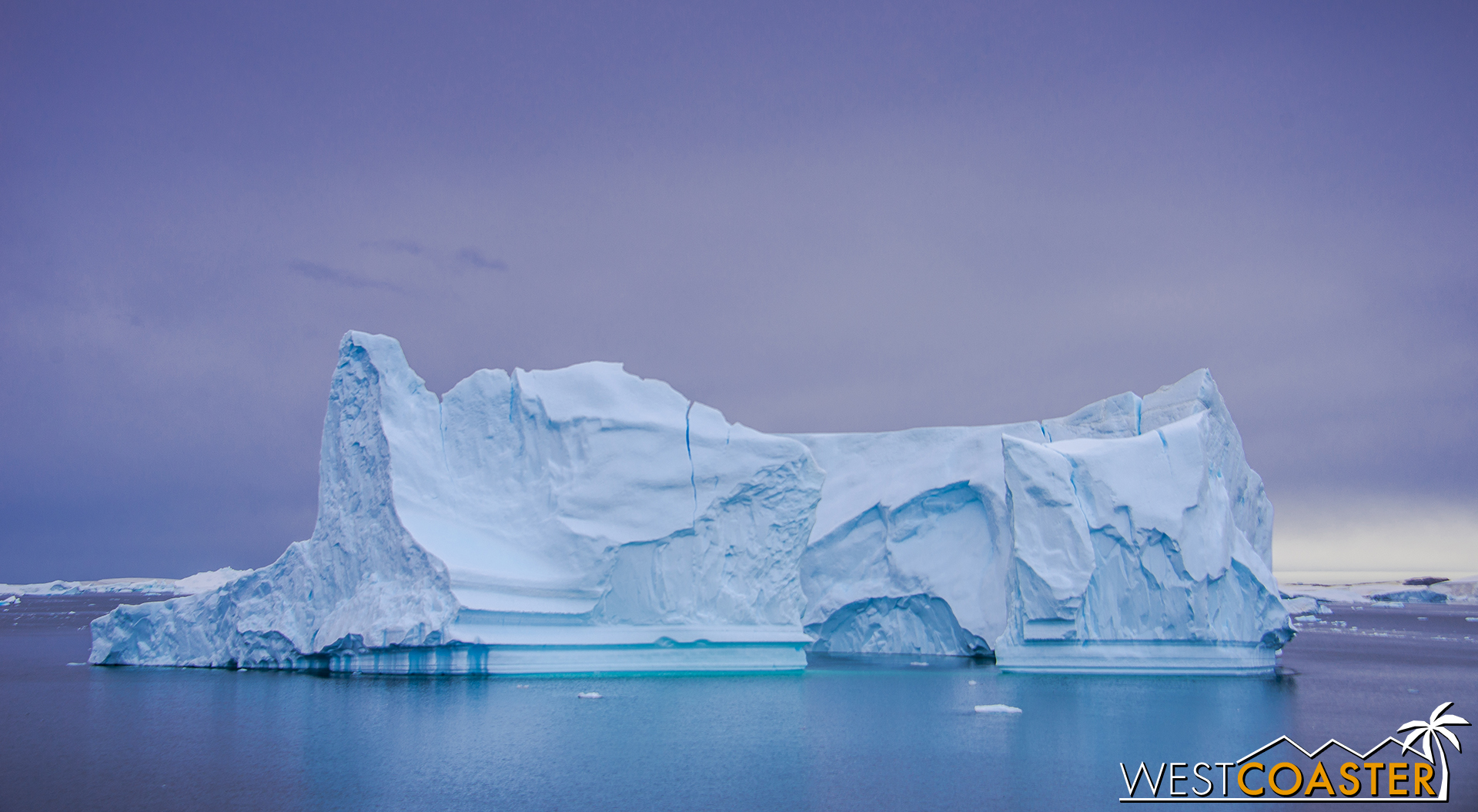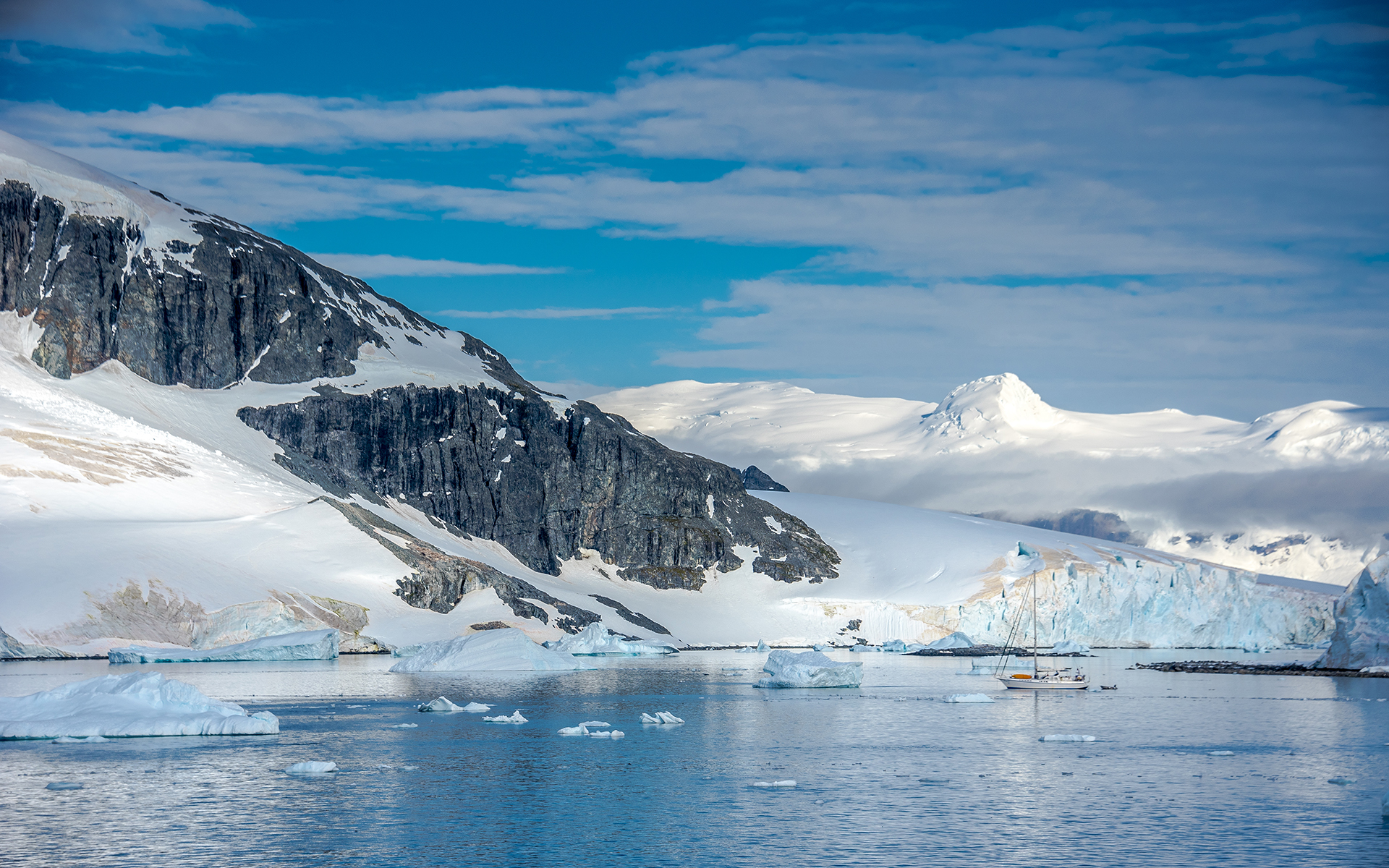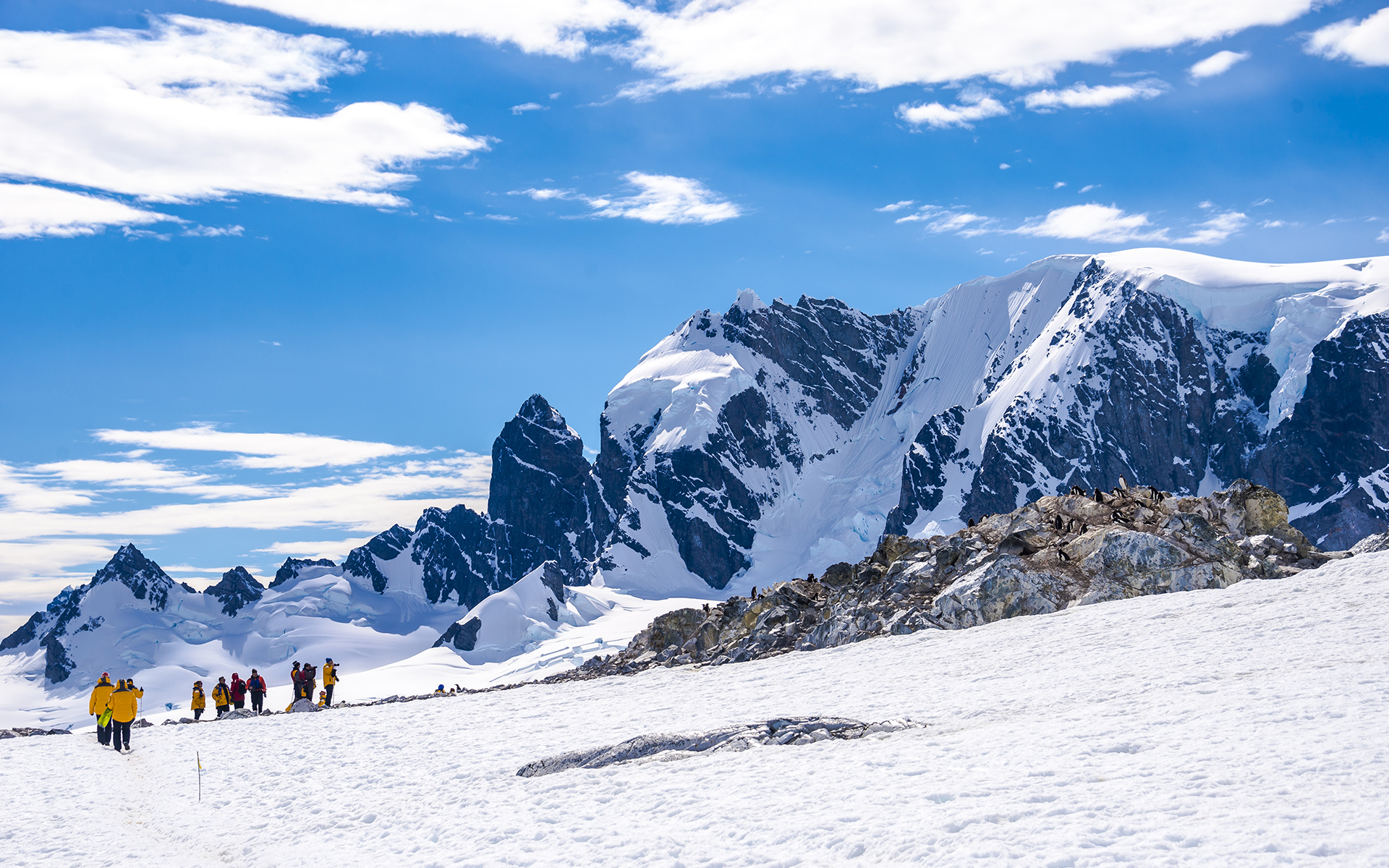Albert's Antarctica Adventure: Cruising the Lemaire
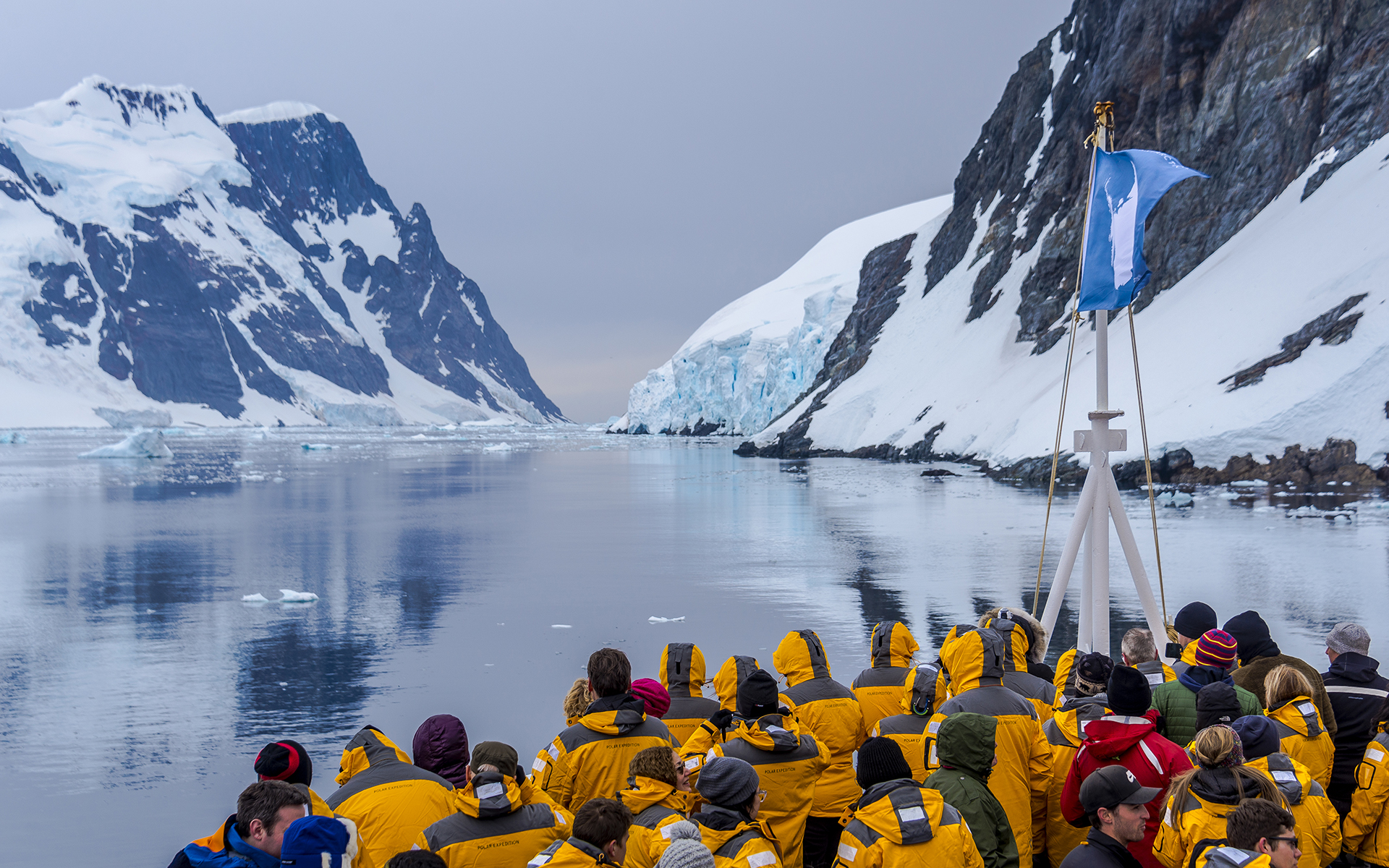
Ferguson Channel & Lemaire Channel, Antarctica
Greetings, Westcoaster…ers…! It’s been a little while since our last update and even more since we took a visit to the 7th Continent. You know, real life being busy and blah blah blah. But we’re back again today with a continuation of my Antarctica adventure that I embarked upon at the beginning of the year! When we last left off, it was our second full day in Antarctica, and our cruise ship, the Ocean Diamond, was departing Neko Harbor and preparing to head toward the Lemaire Channel with an ultimate afternoon destination in Pléneau Bay. Today’s report covers the cruising part before we formally began the afternoon portion of our activities.
The Antarctic landscape as we head southward from Neko Harbor earlier in the morning.
For the vast majority of our time, our actual excursions occurred in the mornings and afternoons of our days in Antarctica. The daily schedule consisted of breakfast, setting out for a cruise and land exploration of our morning site, then back to the ship for lunch and a brief afternoon rest period as we proceeded en route to our next site, then an afternoon excursion, before dinner and evening socializing. However, our second full day of Antarctica provided a formal activity during the lunchtime in-between!
A surprise pod of orcas to our port side.
The excitement started early, almost right after lunch, before we even made it to the Lemaire en proper, when an announcement came on the public address speakers signaling the sighting of a pod of orcas swimming near the ship. Though he had wanted to make speedy time toward the Lemaire Channel, the captain had reluctantly agreed to follow the killer whales for a spell to indulge the ecological observation spirit of our journey. The majority of the passengers eagerly crowded along the side of the ship, peering down at the water to catch a glimpse of the creatures.
The killer whales in a casual mood, drifting along.
To our surprise, they were actually quite visible—because they were practically beside our boat! Whereas most of our whale sightings during the rest of the trip were made with the whales several hundred feet away or more, the orcas swimming along sometimes came as close to right below us. It was an exciting moment, prolonged by the captain’s change in attitude that resulted in a few more turns than initially planned to see more of the whales. It seems that even he was swept by the euphoria of seeing such great creatures up close. I noticed that the Ocean Diamond was able to make some unexpectedly tight turns in its navigation. Though weren’t on a mammoth cruise liner, it was still impressive to observe the nautical agility of this still-large boat!
The trademark dorsal fin of killer whales.
Orcas in Antarctica are more black and yellow (black and yellow) than black and white. The coloring is due to an algal growth on their skin while they're in Antarctic waters.
An orca exhales before this shot is taken.
The orcas eventually headed off in a different direction, and our attention gave way to a few humpback whales in the distance. We followed them for as long a they paralleled the boat, but compared to the unique orca sightings and the proximity with which the killer whales approached the boat, the humpbacks seemed like a lackluster epilogue. They were great to see, fluking through the water, raising their tails as they dove. But they remained relatively far away, even farther than we had seen earlier in the morning in Neko Harbor.
A pair of humpback whales in the distance, after the orcas have left.
The fluking tail of a humpback provides some scale to the massive ice sheet beyond.
Eventually, needing to return to our original focus, we straightened out our course and continued heading southward toward the Lemaire Channel. With the exhilaration dying down, most passengers returned to their cabins to relax.
Cavernous icebergs float by as the Ocean Diamond continues its journey.
A couple of hours later, we had reached the Lemaire Channel. First navigated in 1898 by Belgian explorer, Adrien de Gerlache, and named after Charles Lemaire--an earlier Belgian explorer, but of Africa--the Lemaire Channel is a dramatic, 11km long body of water that is only 700 meters wide at its narrowest point. Dramatically serene, it is lined by towering peaks on either side. Early during the Antarctic tourist season (spring down there; fall up here), it can often fill up with icebergs, increasing the level of difficulty of navigating through and sometimes even impeding it. But during the peak of summer, it is a dramatic and exquisite passage that frequently plays host to Antarctic cruise ships passing through.
On this day, the Lemaire was set in a semi-gloomy day that still retained cool color in the sky. The curving, long body of water seemed to narrow to a barrier, and we were told that the captain would require skillful navigation to make it through the icy obstacles in the water as we passed through. Indeed, from afar, it seemed as though our Ocean Diamond would have to thread a needle to cross the channel. The towering black peaks on either side made for a dramatic sight, laden with dense ice pack and snow, as little icebergs dotted the seascape.
Looking northward from the tip of the Lemaire Channel.
Looking southward into the channel, the passage appears to be blocked--or at least impossibly narrow.
Passengers were encouraged to gather at the front of the ship as we made our way through the Lemaire, assembling in the front bow usually closed off and restricted to crew only. There was an air of cheer and anticipation as we made our way southward, helped by the serving of hot chocolate (with one's choice of alcohol or not). Though the water was still, the air was not, and a snappy breeze blowing across the ship kept the atmosphere crisp.
As we pressed forward, the expedition crew gathered all of us together for a ship photo. Our photographer, Dave Merron, bravely climbed the mast, tethering himself for safety, before firing off several shots. It must have been a fantastic view up there, and I half-joked about signing whatever waiver needed to get a similar photographic vantagepoint. Alas, I was politely refused the opportunity.
Passengers gather at the front of the boat as the Ocean Diamond continues chugging along.
Dave, our expedition photographer, readies to capture a photo of passengers and crew gathered upon the bow.
The bow fills up as we approach the neck of the Lemaire.
Ship photo courtesy of David Merron Photography.
Group photo out of the way, we were left to enjoy our beverages and soak in the surreal scenery all around us. As we passed through the heart of the Lemaire Channel, I gazed in awe at the geology that surrounded us. From afar, the mountains looked impressive enough. Up close, they were even more intimidating. Craggy rocks and steep snowbanks produced a scene unlike any I had ever witnessed. The accumulation of heavy powder at the top of many of the tops left me just a bit anxious. 'Please no avalanche... please no avalanche..." I thought to myself. Any sudden sliding of snow would topple directly onto us, so close were we to the steep shoreline.
The tips of the mighty ranges surrounding the Lemaire are laden with snow and ice.
Ice seems to overflow on top of the high crags, threatening to spill over!
Though the channel seemed impossibly small upon its approach, we found plenty of space to cruise through once we followed the curve of the water. The icebergs in our way were fortunately rather slight. The Ocean Diamond gently pushed through them with grace and etiquette, as though it might be a nobleman gently sliding through a dinner crowd.
Beyond the channel, we could see more icebergs, indicating our arrival at Pléneau Bay. This would be our introduction to the "Iceberg Gallery," or "Iceberg Graveyard," as some called it. A magnificent and tranquil stretch of water protected from the sea by sheltering islands surrounding it, frequented by massive and sublime monoliths of floating ice. An unmistakable waft of guano permeated the air from afar, signaling the presence of a penguin colony nearby. But that adventure will have to wait until our next installment. We had made it through the Lemaire Channel. Now, it was time to prepare for our impending cruise through Pléneau Bay.
The gray horizon beyond, after passing through the narrowest part of the Lemaire Channel.
Blue waters and dying icebergs mark the passage into Pléneau Bay.
A preview of our next destination.
Pléneau Bay would mark the southernmost point of our overall voyage. We would actually make our way back up the Lemaire Channel later in the evening, taking in the sights once more via an outdoor barbecue that Quark Expeditions staff members set up. Though I would be well on my way to illness from a viral infection by the time we were heading back and shivering despite the relative Antarctic warm (a balmy low 30s), I still had enough presence to appreciate the majesty that surrounded us.
The Lemaire Channel is a gate way to the southern Antarctic peninsula for many Antarctic tours that take a more extensive and remote itinerary. The introductory cruise I was part of treated the Lemaire as a far point rather than a springboard, but that didn't detract from the beauty of the land and my appreciation for it. Our cruise wasn't even half over, and already, I felt like we had experienced such richness in observing Antarctic biodiversity and topology. But our cruise through the "Iceberg Graveyard" would prove to be even more astounding...
Architect. Photographer. Disney nerd. Haunt enthusiast. Travel bugged. Concert fiend. Asian.






















